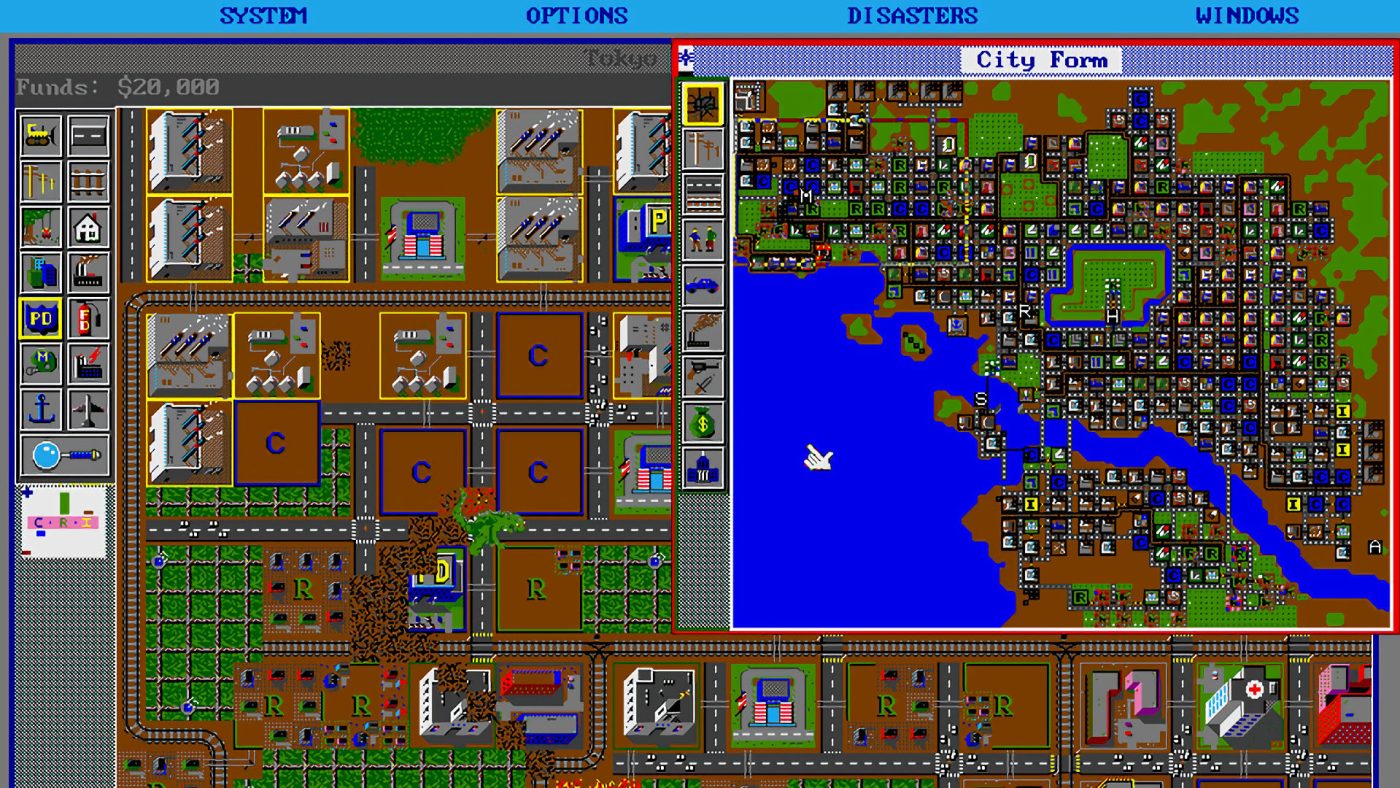Released in 1989 by Maxis, SimCity is often celebrated as the game that ignited the city-building genre. While it wasn’t the first game to incorporate elements of city planning and management, its comprehensive and engaging approach set it apart, establishing a blueprint that would influence countless successors.
The Birth of a Genre
SimCity was not the absolute pioneer of city-building concepts, but it was undoubtedly the game that brought the genre into the mainstream. Earlier titles, such as Utopia (1982) for the Intellivision, laid the groundwork by allowing players to build and manage a society. However, Utopia and other predecessors had limited scope and complexity, focusing more on basic resource management and simplistic city layouts.
SimCity, designed by Will Wright, took these nascent ideas and expanded them into a robust simulation that emphasized the intricate balance required to build and maintain a thriving metropolis. Players were tasked with zoning land for residential, commercial, and industrial use, managing the city’s finances, and ensuring the happiness and safety of its citizens. This comprehensive approach to urban planning was revolutionary, providing an unprecedented level of depth and realism.
The Scope of SimCity
What set SimCity apart from its predecessors was its expansive scope. Unlike earlier games that confined players to small, straightforward scenarios, SimCity offered a sandbox environment where creativity and strategy were paramount. Players could build sprawling cities from scratch, experimenting with different layouts, policies, and growth strategies. The game’s open-ended nature meant there was no definitive end goal; success was measured by the player’s ability to create and sustain a vibrant, functioning city.
The complexity of SimCity’s systems also contributed to its immersive experience. Players had to consider a multitude of factors, including traffic congestion, crime rates, pollution, and public services. Balancing the city’s budget was a constant challenge, requiring careful management of tax rates and public spending. This multifaceted approach made SimCity a rich and engaging simulation that appealed to a wide audience.
Scenarios and Challenges
In addition to the open-ended sandbox mode, SimCity featured a variety of scenarios that added structured challenges to the game. These scenarios placed players in pre-built cities facing specific problems, requiring them to use their urban planning skills to resolve crises and achieve designated goals. Scenarios included dealing with natural disasters, managing economic downturns, and responding to escalating crime rates.
One of the most memorable scenarios involved a Godzilla-like monster attack. This scenario added a fun and chaotic element to the game, challenging players to rebuild and recover from the devastation wrought by the gigantic creature. This inclusion of fantastical elements showcased SimCity’s ability to blend realism with playful creativity, providing a diverse range of challenges that kept players engaged.
Influence on the City-Building Genre
The success of SimCity paved the way for a new wave of city-building games, each inspired by the intricate systems and open-ended gameplay introduced by Maxis. Titles such as Caesar (1992) and its sequels took the core mechanics of SimCity and applied them to historical settings, adding layers of historical context and additional gameplay elements like military management and trade.
The 1999 release of SimCity 3000 further refined the genre, introducing more detailed graphics, expanded building options, and deeper simulation mechanics. This iteration solidified the series’ reputation for innovation and complexity, influencing a host of modern city builders. Games like Cities: Skylines (2015) owe a significant debt to SimCity, incorporating advanced simulation techniques, extensive modding support, and player-driven content that continue to push the boundaries of the genre.
A Legacy of Innovation
SimCity’s impact on the gaming industry extends beyond its immediate successors. The game’s emphasis on user-generated content and modding has become a standard in the industry, fostering active communities that contribute to the game’s longevity and replayability. This approach can be seen in many modern titles across various genres, where player creativity and engagement are central to the experience.
Moreover, SimCity introduced a level of realism and detail that has become a benchmark for simulation games. The game’s ability to simulate the complexities of urban life, from infrastructure to social dynamics, set a high standard for accuracy and depth. This legacy is evident in contemporary simulation games like Planet Coaster and Tropico, which strive to create detailed and immersive worlds that react to the player’s decisions.
A Moment in Gaming History
Looking back at SimCity, it is clear that its release in 1989 marked a pivotal moment in gaming history. While it was not the first game to explore city-building themes, it was the first to do so with such depth, complexity, and open-ended creativity. SimCity’s comprehensive approach to urban planning and management set a new standard for the genre, inspiring a generation of developers and shaping the future of simulation games.
The game’s influence can be seen in the many titles that followed, each building upon the foundation laid by Will Wright and Maxis. SimCity’s legacy is one of innovation, creativity, and a commitment to realism that continues to resonate with players and developers alike. As we reflect on this iconic game, it is clear that SimCity remains a cornerstone of the city-building genre, a testament to the enduring appeal of its innovative design and gameplay.


